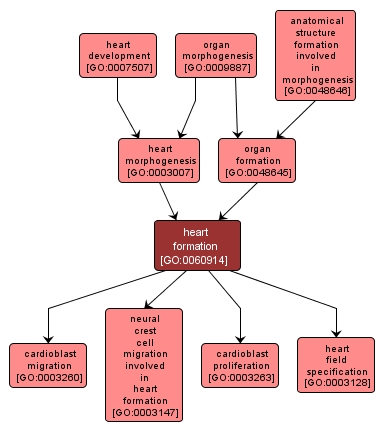| Desc: |
The developmental process pertaining to the initial formation of the heart from unspecified parts. This process begins with the specific processes that contribute to the appearance of the heart field and the arrival of cardiac neural crest to the heart region. The process ends when the structural rudiment is recognizable. |














